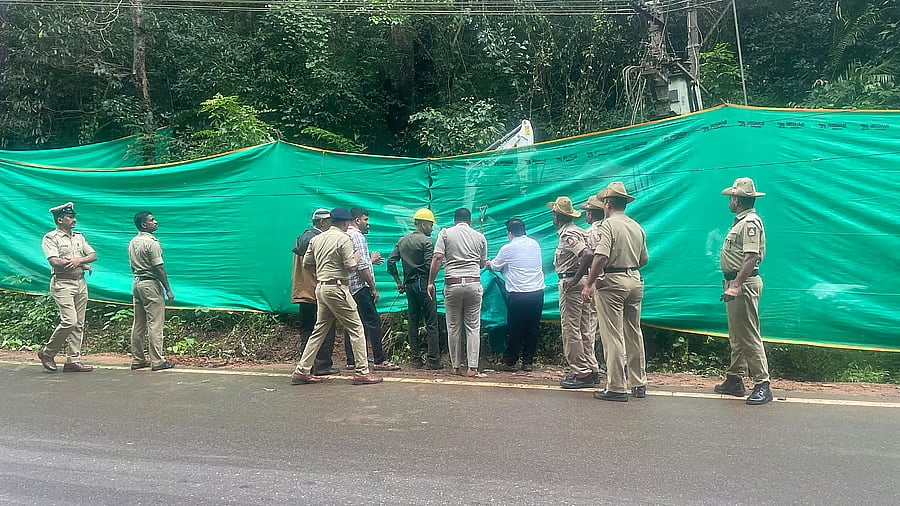
SIT officials in Dharmasthala.
Credit: DH Photo/ Fakruddin H
Bengaluru: The Special Investigation Team (SIT), constituted to probe the alleged mass burial in Dharmasthala, is set to borrow a technique from archaeology to plumb the depths of the temple town in search of the interred remains.
The team is all set to deploy ground penetrating radar (GPR), a near-surface geophysical technique used by archaeologists to discover and map buried features.
The GPR can fathom up to 10 metres or even deeper (depending on the extent of the operation). This, the team hopes, will help the officers dig deeper to unravel the mystery.
The radar will also help the officers sweep a larger extent of area faster. But the technique is said to be expensive, running into lakhs and even crores, depending on the extent of operation.
SIT sources confirmed to DH that the GPR operation will start soon. They said the team has approached private vendors in Delhi, Bengaluru and Kerala seeking pro-bono deployment of GPRs for the job.
While the technique has been widely used for tunnel detection in terror prone areas, spotting bodies during landslides and detecting steel and metal in mining areas, this is the first time it will be used for criminal investigation in Karnataka.
“The GPRs are hand-held machines that can even be mounted on drones if necessary. They are similar to a bomb detection exercise,” sources explained. They added, “So far we have used manual digging at spots where bodies are suspected to be buried, but going further we will also use these radars to cover larger extent of area, about 20 m X 40 m.”
A senior police officer privy to the probe, said GPR sends electric permittivity and magnetic permeability waves from a surface antenna into the earth and the waves are deflected when they run into subterranean obstacles that are transmitted back giving a clear idea of the object.
“This, over a period of time, creates an accurate map of the entire ground beneath. It can perfectly work as it goes deeper,” said the officer. This mapping, in turn, helps detect discerning objects.
The biggest challenge in using the GPR is when soil is saturated with solid, along with dense surface vegetation. This kind of setting distorts
radar signals, making it harder to detect small or deeply buried objects like bones.
“For instance, let us say there is a skull, but if it is covered with a metal or a rock, the GPR cannot detect it. If and when we do find bodies, we will manually dig at the spot and the findings will then be handed over to the FSL for further investigation,” the source explained.
The sources added, “Also, we must understand in the event we find the bodies, they would have been buried many years ago and there would be no flesh and only bones at various stages of decomposition. The weather conditions are such that decomposition is faster and finding a clear DNA to ascertain the cause of death will be tough.”